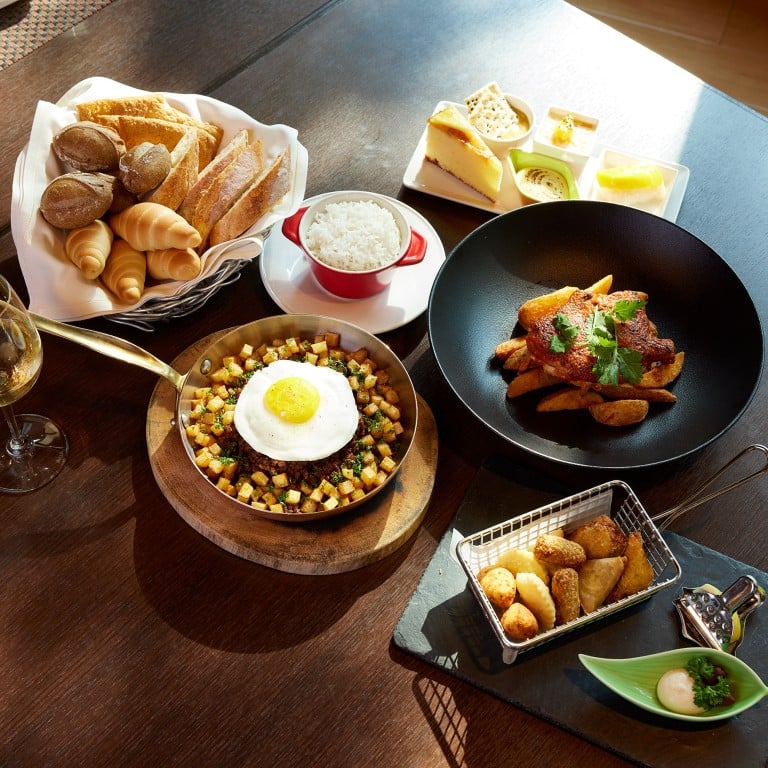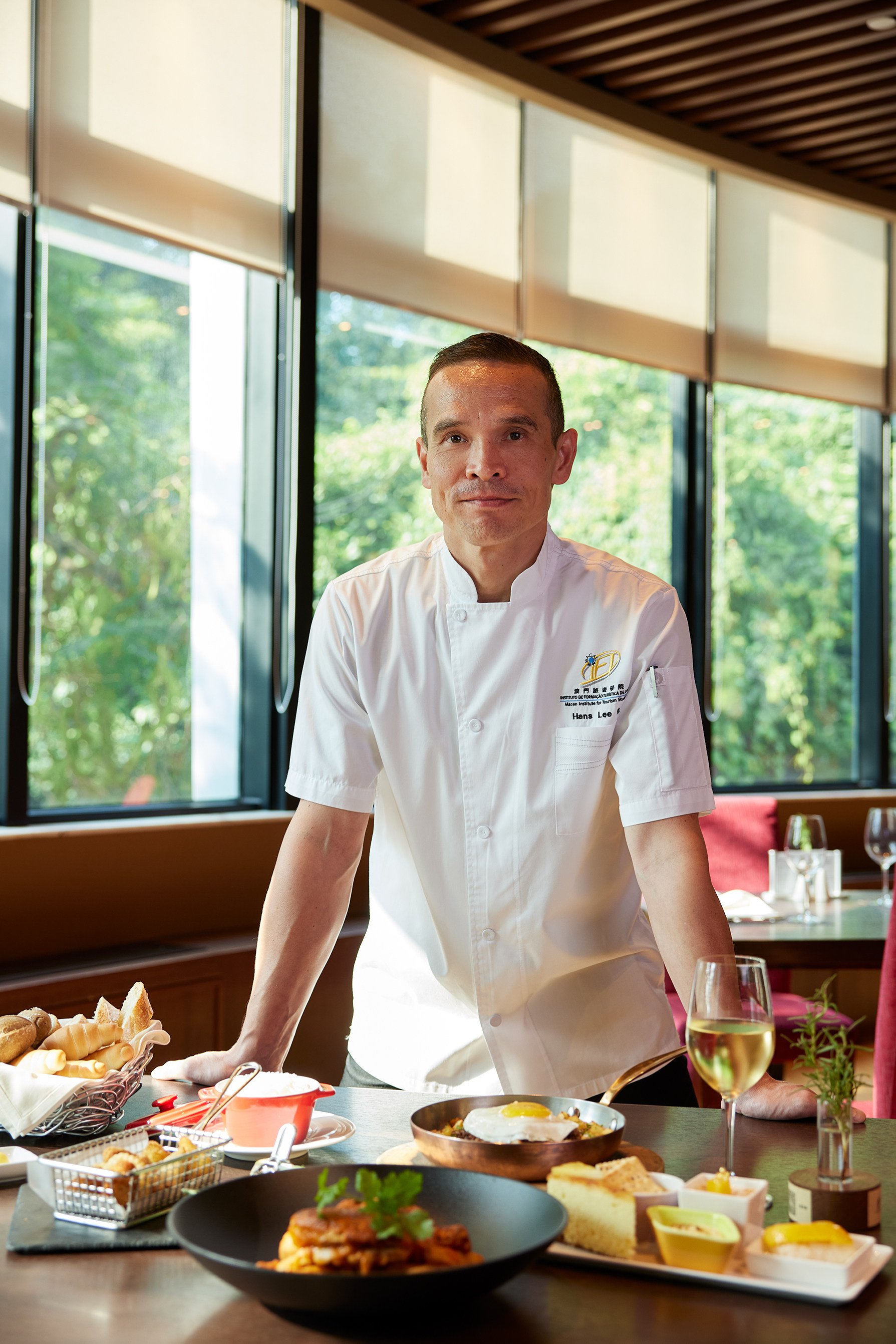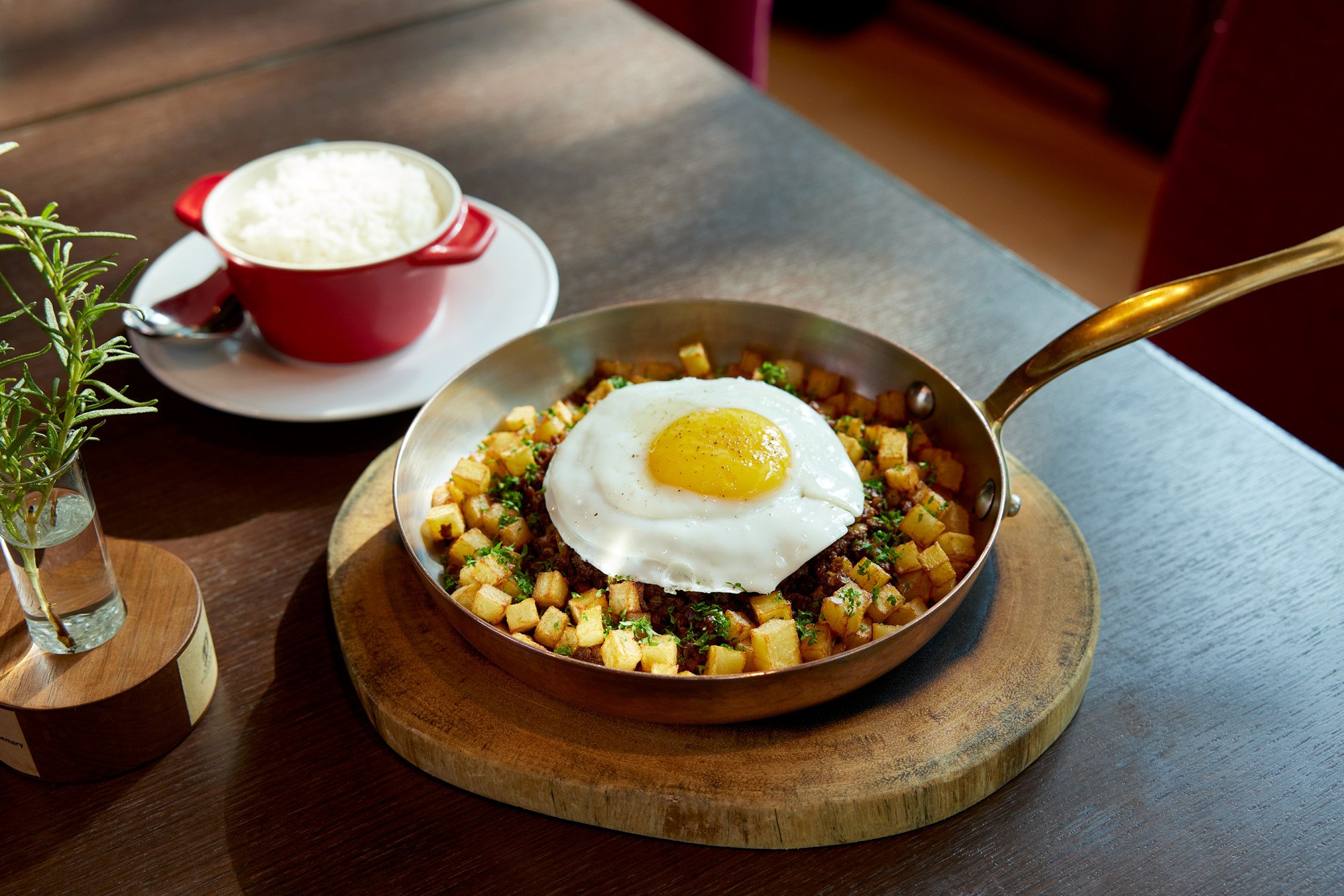
- As a training facility of the Macao Institute for Tourism Studies, the restaurant helps hospitality and culinary arts students gain real-world experience
- The global menu features a wide range of classic Macanese dishes, some of which have been modernised with lighter or vegan variations
Macanese food is one of Asia’s most famous examples of creole cuisine, yet it can often be misunderstood. A common misconception about Macanese cuisine is that it consists of Portuguese cooking with Asian influences, but there is so much more to it than that.
The extensive travels of Portuguese explorers in the 15th and 16th centuries facilitated a lot of culinary cross-pollination. After establishing a trading outpost in Macau in 1557, they began bringing ingredients from all over the world to the tiny territory.
Because Macau was often the last stop of sea voyages from Europe, Portuguese ships would arrive at the port laden with foodstuffs from Africa, India and Melaka in what is now Malaysia. The merchants and sailors also brought with them cooking techniques learned in various other colonies.
Many Portuguese settlers married local women, and their mixed-race families began creating fusion-style recipes that are known today as signature Macanese dishes. These include pork braised in tamarind and shrimp paste, Portuguese chicken served in a yellow sauce of turmeric powder thickened with coconut milk, and diabo, or “the devil’s stew”.
Diamantina Rosário Coimbra, vice-president of the Macao Institute for Tourism Studies (IFTM), explains: “[Diabo] is a dish made with the leftovers from Christmas feasts – you have beef, you have pork, a little bit of everything. We make use of these leftovers and make a totally new dish, incorporating a new sauce made of potato, tomato, some wine, mustard and pickles to create it.”

She adds: “Some of the [Macanese] dishes are very Asian, similar to those you can find in Malaysia. At the same time, you can find dishes that are extremely Western, such as capela, which is similar to British meatloaf but with local ingredients.”
Recipes may vary, but capela is generally made with ground pork, almonds, bacon, olives, onions and breadcrumbs. Chouriço, a cured, smoked sausage, is sometimes added to the mix.
IFTM was founded in 1995 to provide higher education and professional training for students pursuing careers in hotel management, tourism event management or culinary arts management. The institute’s Educational Restaurant serves a wide range of Macanese dishes along with European dishes.
“I’d say it’s 50 per cent Macanese and 50 per cent international,” says Hans Rasmussen, the restaurant’s general manager and chef. “And the international side has a touch of the Mediterranean – a little bit of Portuguese and a little bit of Italian. You can also find a good open-faced sandwich from the menu, as it’s one of my favourites from the northern part of Europe, where I grew up.”

One of Rasmussen’s missions is to find ways to update Macanese dishes for modern-day palates, leveraging his experience working as a chef for Michelin-starred restaurants in Copenhagen. He has lightened some of the Macanese recipes by adjusting the amounts of seasoning and high-fat ingredients while incorporating cooking techniques that require less oil or fat. In addition, he has created vegan alternatives.
“Good examples here would be the cabbage roll or the minchi, where instead of using pork or beef, you can use plant-based meat. And we can create a vegan sauce to replace the Worcestershire, since it has anchovies in it,” Rasmussen says. “You can play a little bit without straying too far apart from traditional recipes.”
Minchi, which is often called the “national dish” of Macau, is traditionally made with minced pork or beef – or a combination of both – stir-fried with onions, diced potatoes and garlic. It is believed that the dish’s name was derived from the English word “minced”.
While the restaurant continues to showcase Macau’s culinary history, it also aims to offer a stylish dining experience. Coimbra explains: “With Chef Hans on board, our dishes now have a more modern flair. And the interior has also changed. It used to be rather traditional, with long curtains draping down to the floor … it is definitely more contemporary today.”

The restaurant underwent a major renovation in recent years, which included a revamp of the decor. Now, as diners arrive, their eyes will be drawn to the impressive vertical green walls of flowers and plants by the entrance, as well as the huge wine display that lights up the driveway at night. The airy interior features dark-wood panelling, textural glass installations and simple but elegant floral displays.
Behind the scenes, sustainability is high on the agenda. Under the International Organization for Standardisation (ISO) programme, the restaurant has applied quantifiable measures to reduce carbon emissions from electricity use. It is also cutting back on water consumption and food scraps, and raising the ratio of recycling to general waste. In addition, technology is being used to monitor inventory, producing reports that help the kitchen team minimise food waste.
The IFTM Educational Restaurant also has a herb and vegetable garden where it grows some of its own produce. Besides reducing the restaurant’s carbon footprint in the supply chain, the garden also allows the kitchen to have hard-to-find ingredients such as fig leaves, which can be used to make jam, and papaya flowers, which can be prepared like a vegetable.
“We are selling fig leaf jam and winter melon jam at the shop. With herbs in the garden that do not get used, we dry them and sell them,” Rasmussen says. “For recycling, we have a food decomposer for food waste, and it goes back to the garden as fertiliser.”

The restaurant’s sustainable features are completed with a rainwater collection system that supports irrigation in the garden, plus solar panels that supplement the electricity supply. These environmentally friendly efforts have earned the restaurant a Green Star designation in the Michelin Guide Hong Kong and Macau 2023 edition, alongside a Bib Gourmand recommendation.
But perhaps the most special aspect of a visit to the IFTM Educational Restaurant is the chance to play a part in shaping Macau’s hospitality culture. There, diners become evaluators of students who are eager to learn by helping run the meal service.
“Our guests are also participating in class … it’s not an experience you can get from just another restaurant,” Coimbra says.


